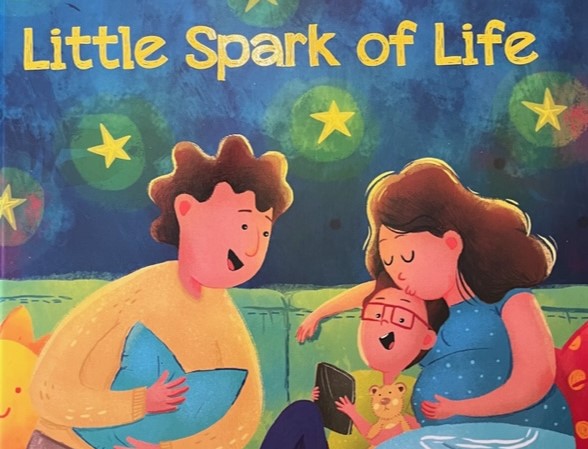By Susan Ciancio
If we want to change our culture to one that respects life from the very first moment of creation, we must educate children from their very beginning. Not only must we teach them the truth about our world, but we must help them understand scientific facts. This is especially true when it comes to the creation of a tiny baby.
Education comes in many forms, and one of the best ways to educate a small child is to read to him and have conversations about what you read. That’s why we want to introduce you to a delightful new book by Courtney Siebring called Little Spark of Life.
Perfect for children preschool aged until about third grade—especially those expecting a younger sibling—this book will help generate excitement about the preborn baby. Through charming illustrations and fun rhymes, Little Spark of Life gives young children a glimpse into the world of the preborn baby.
With simple and understandable language, this book clearly shows the humanity of the preborn baby and explains that the baby is a unique human being from the very first moment of creation. It teaches that God has a plan for each of us. And it helps kids “see” the growing baby that cannot yet be seen.
We know that children are naturally curious. And anyone who has been around a small child who sees a pregnant mother or who has had a child and also been pregnant knows that little children are filled with wonder at the miracle taking place in the mom’s belly.
It’s so much fun to share a baby’s development with children because they inherently know that something amazing is happening. The questions are incessant. How did the baby get in there? When will the baby get out? What is the baby doing? What does he look like?
Little Spark of Life answers those questions and more!
The truths this book imparts—such as “only once can this person happen in this exact way” and “two separate bodies in one single place”—help build a foundation that parents can then build upon as the child grows. The book lovingly discusses how the baby grows, and it celebrates each developmental milestone.
Every time we refer to the preborn baby as a baby, every time we share our excitement for pregnant moms, and every time we allow our children to share in that excitement, we reinforce the truth that this growing baby is indeed a human being. Little Spark of Life is an essential tool in this foundational process.
Toward the end of the book we read, “All babes, deeply hoped for or unplanned surprise, hold the same worth from the first cell divide.” Indeed. All people—born and preborn—have inherent dignity and value. If we teach this truth from the time children are small, they will be better able to combat those in our society who want them to believe otherwise. They will see past the lies and flimsy excuses that a culture that reveres abortion wants them to espouse.
When we help children truly learn to love and respect that human being growing inside his mother, we give them the tools they need to defend that baby. That’s why we must embrace every chance we get to teach these truths. And that’s why books like Little Spark of Life are vital additions for all libraries.
